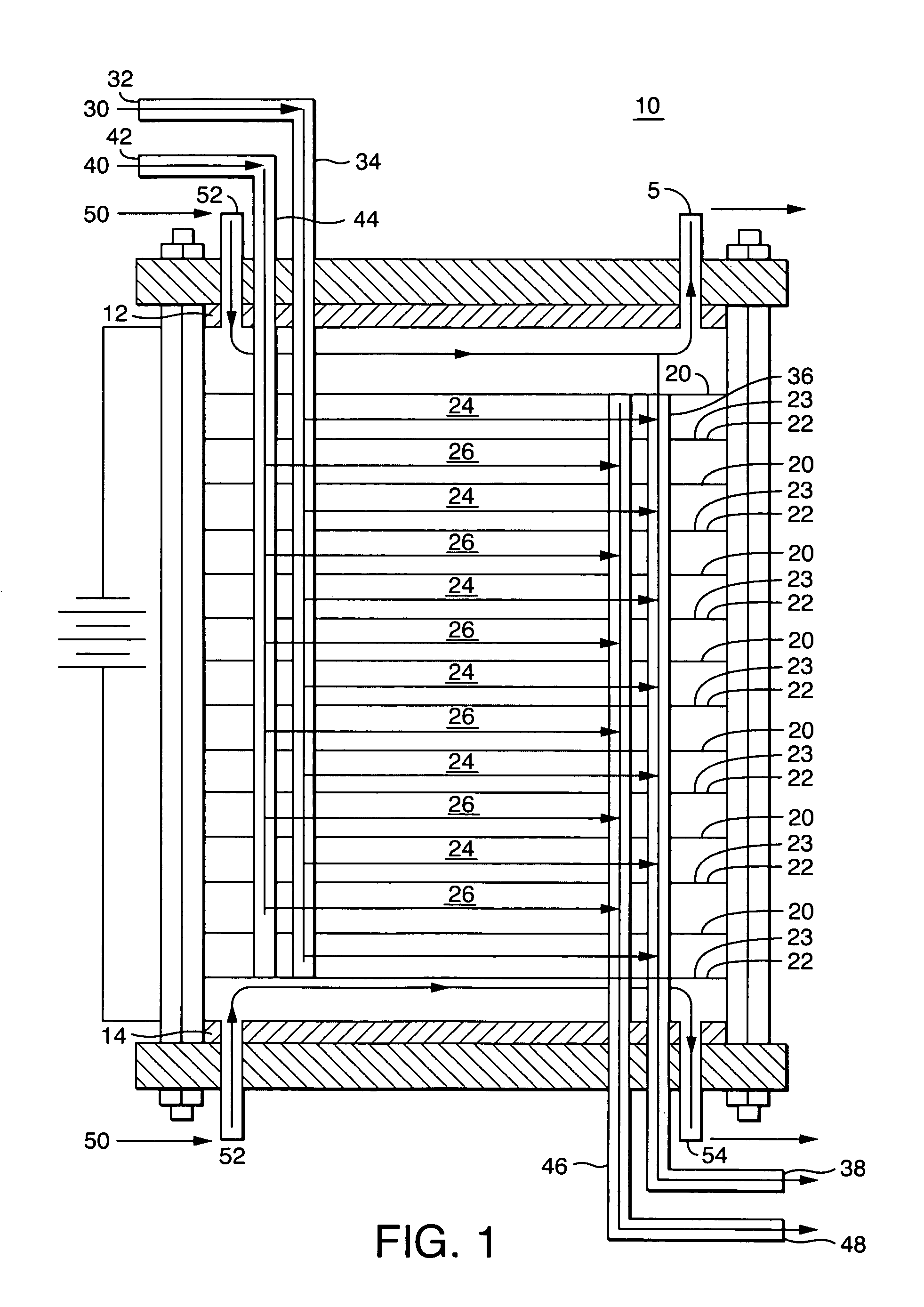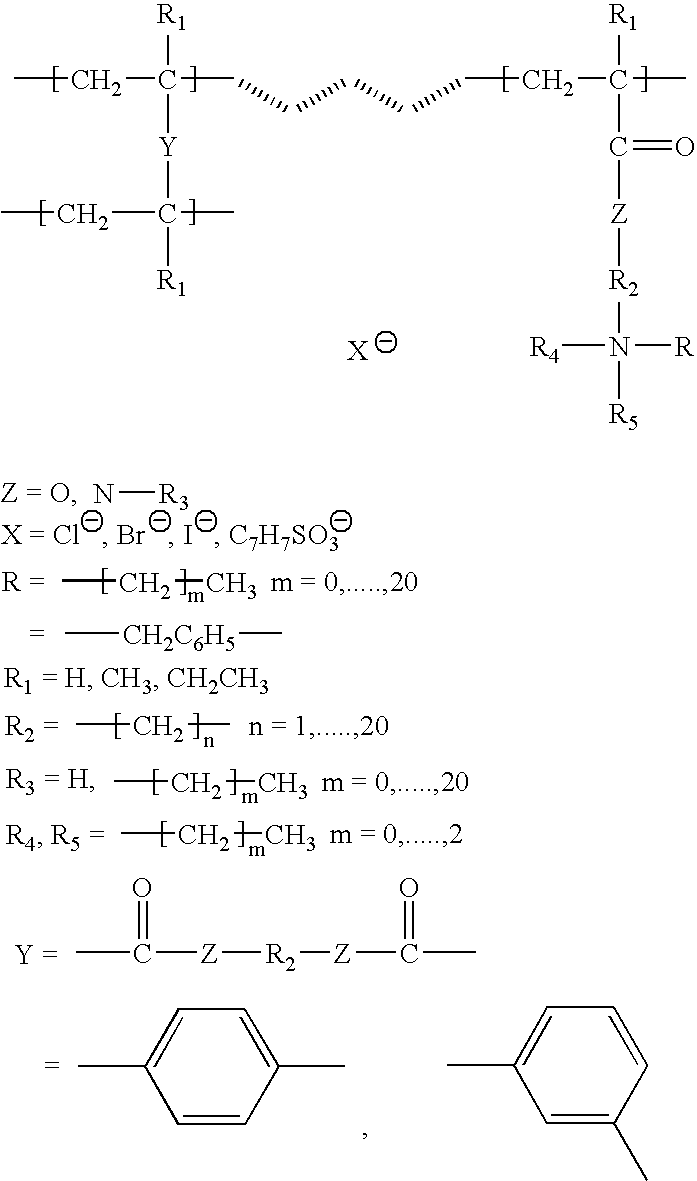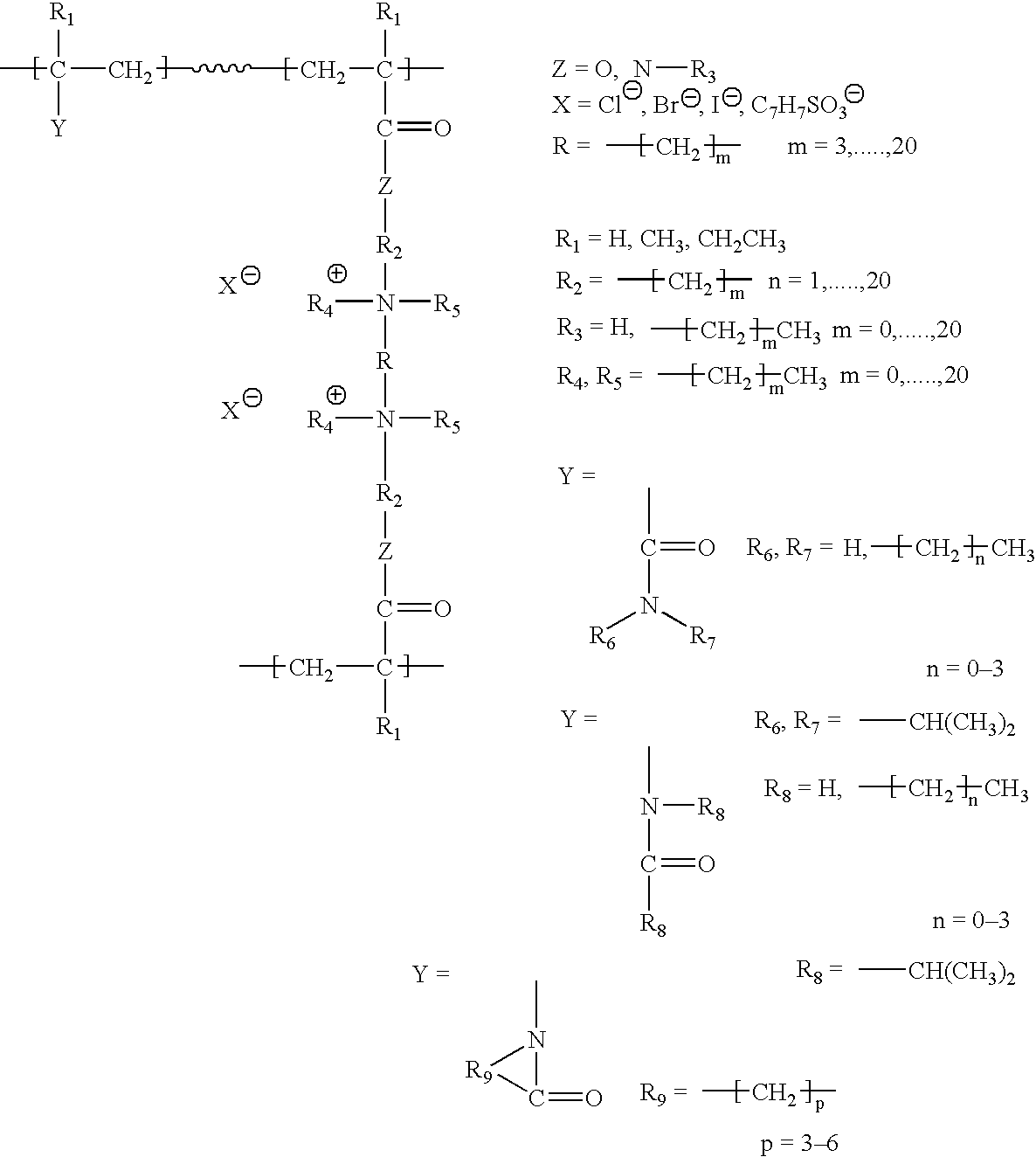Ion exchange and electrochemical methods and devices employing one-step quaternized and polymerized anion selective polymers
a technology of quaternized and selective polymerization and electrochemical methods, which is applied in the field of ion exchange and electrochemical methods and devices, can solve the problems of rapid deformation of exchange resins and transfer membranes formed of methacrylate esters in the presence of caustic solutions, membrane leakage, and weakening of exchange resins and transfer membranes made from such polymers
- Summary
- Abstract
- Description
- Claims
- Application Information
AI Technical Summary
Problems solved by technology
Method used
Image
Examples
example one
[0058]Thirty-one (31) volume % dimethylaminopropylmethacrylamide (DMAPMA) ethylenic tertiary amine was mixed with 19 volume % of butyl bromide (BuBr) alkylating agent and 18 volume % of divinylbenzene (DVB) cross-linking agent in 32 volume % of 2-pyrrolidone solvent at room temperature of approximately 70° F. in the presence of 0.1 volume % of tertiary butyl peroctanoate (TPO) catalyst.
[0059]After complete dissolution of the mixture, the liquid mixture was added to a acrylic cloth reinforcing substrate to form sample membrane. The cast membrane was cured between glass plates at 100° C. temperature for approximately thirty (30) minutes.
[0060]The sample membrane was characterized following standard ion exchange membrane characterization procedures, as shown in Table I below.
[0061]
TABLE IMembrane A CharacteristicsWaterWaterTransportCapacitycontentResistivityThicknessTransportNo.(meq / g)(%)(ohm-cm2)(cm)No.(mL / F)2.7241.19.8.056.97192
[0062]The anion exchange capacity was expressed as milli...
example two
[0065]In this example, 27 weight % of the ethylenic tertiary amine monomer dimethylaminopropyl methacrylamide (DMAPMA) was mixed with 13 weight % of the diluent ethylenic monomer N-vinylpyrrolidone (NVP) in 40 weight % of water as a solvent. Approximately 19 weight % of 1,6-dibromohexane (DBH) was added as a cross-linking alkylating agent. The mixture was initially heated to 70° C. and then cooled to about 25° C. The water soluble catalyst VA04™ (produced by Wako Chemicals USA, Inc., Richmond, Va.) in the amount of 1 weight percent was added to the mixture. After complete dissolution of the mixture, the mixture was cast onto acrylic cloth reinforcing substrate to form sample membrane B. The cast membrane was cured between glass plates at approximately 85° C. for approximately thirty (30) minutes.
[0066]The sample membrane B was characterized following standard ion exchange characterization procedures, as described above in Example One. The properties of the membrane are set forth bel...
PUM
| Property | Measurement | Unit |
|---|---|---|
| Temperature | aaaaa | aaaaa |
| Electrical resistance | aaaaa | aaaaa |
| Electrical resistance | aaaaa | aaaaa |
Abstract
Description
Claims
Application Information
 Login to View More
Login to View More - R&D
- Intellectual Property
- Life Sciences
- Materials
- Tech Scout
- Unparalleled Data Quality
- Higher Quality Content
- 60% Fewer Hallucinations
Browse by: Latest US Patents, China's latest patents, Technical Efficacy Thesaurus, Application Domain, Technology Topic, Popular Technical Reports.
© 2025 PatSnap. All rights reserved.Legal|Privacy policy|Modern Slavery Act Transparency Statement|Sitemap|About US| Contact US: help@patsnap.com



